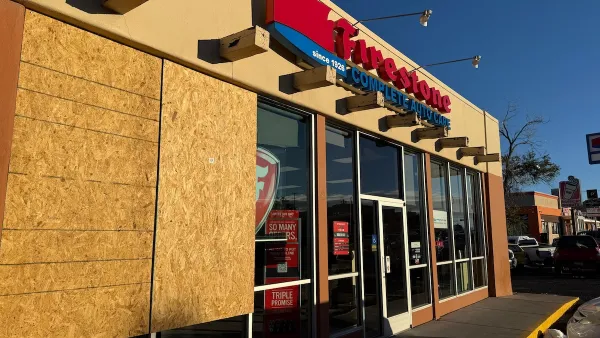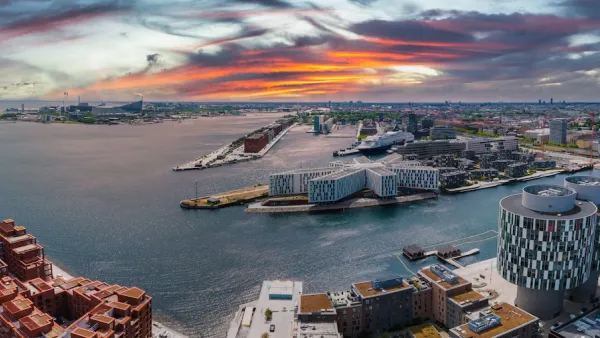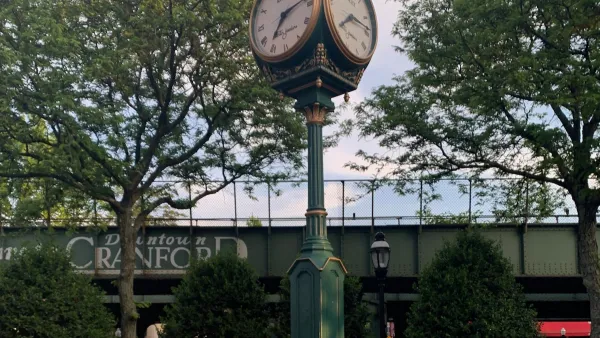Historic preservation still suffers from an image problem, even in the face of all available evidence. Some critics still have the misimpression that preservationists are fussy (even fusty) antiquarians. When I hear complaints about the requirements of historic review commissions, I’m amazed that the griping is often accompanied by a crack about the local “hysterical society.” Even the Wikipedia entry on “historic preservation” contains the passage, “‘historic preservation’ is sometimes referred to as ‘hysterical preservation’.” (And, of course, Wikipedia is ever-infallible).
Historic preservation still suffers from an image problem, even in the face of all available evidence. Some critics still have the misimpression that preservationists are fussy (even fusty) antiquarians. When I hear complaints about the requirements of historic review commissions, I'm amazed that the griping is often accompanied by a crack about the local "hysterical society." Even the Wikipedia entry on "historic preservation" contains the passage, "‘historic preservation' is sometimes referred to as ‘hysterical preservation'." (And, of course, Wikipedia is ever-infallible).
Yet, despite such rhetoric, historic preservation has truly gone mainstream in recent years. Preservation has become an integral part of community policies to support economic development, housing, neighborhood revitalization, and quality of life. All across the nation, preservation is driving economic revitalization and new housing supply.
In my own city, Los Angeles, an Adaptive Reuse Ordinance passed in 1999 has become the city's most successful generator of new housing – resulting in the completion of over 4,300 units, 4,200 more units under construction, and another 3,200 in the development pipeline – mostly in significant historic structures that had sat vacant for years. New legions of preservationist developers have emerged and even the largest, established development firms have learned that preservation adds economic value.
Yet, some planners still view historic preservation as a low priority – a secondary, purely aesthetic concern that necessarily competes with other planning and policy goals. That will require a shift in mindset to understand that historic preservation plays an essential role in shaping great cities.
But perhaps some preservationists may need to change their mindset, as well. Since we've seen that even a tiny minority of nit-picky purists can perpetuate outdated perceptions and hackneyed wisecracks, preservationists must not wallow solely in nostalgia or convey an instinctual resistance to change. The preservation community should continue to articulate an expansive planning vision that embraces innovation, exciting new architecture, and the opportunities of well-managed growth, all while reminding planners and the public that we must anchor our communities firmly in their historic "sense of place."

Analysis: Cybertruck Fatality Rate Far Exceeds That of Ford Pinto
The Tesla Cybertruck was recalled seven times last year.

National Parks Layoffs Will Cause Communities to Lose Billions
Thousands of essential park workers were laid off this week, just before the busy spring break season.

Retro-silient?: America’s First “Eco-burb,” The Woodlands Turns 50
A master-planned community north of Houston offers lessons on green infrastructure and resilient design, but falls short of its founder’s lofty affordability and walkability goals.

Test News Post 1
This is a summary

Analysis: Cybertruck Fatality Rate Far Exceeds That of Ford Pinto
The Tesla Cybertruck was recalled seven times last year.

Test News Headline 46
Test for the image on the front page.
Urban Design for Planners 1: Software Tools
This six-course series explores essential urban design concepts using open source software and equips planners with the tools they need to participate fully in the urban design process.
Planning for Universal Design
Learn the tools for implementing Universal Design in planning regulations.
EMC Planning Group, Inc.
Planetizen
Planetizen
Mpact (formerly Rail~Volution)
Great Falls Development Authority, Inc.
HUDs Office of Policy Development and Research
NYU Wagner Graduate School of Public Service




























